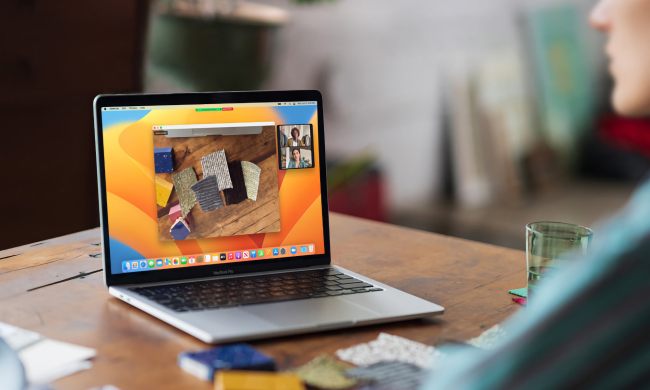Apple has announced the latest in its lineup, the simple MacBook. Not only is the new offering the thinnest laptop Apple has ever produced, but the 12-inch machine comes equipped with a Retina display, all-day battery life, and a host of updated hardware. However, how does the forthcoming device compare with our current front runner when placed side by side? Check out the direct comparison below for a closer look at the two competing devices and their capabilities.
|
2015 MacBook |
2015 Dell XPS 13 |
|
| Dimensions | 11.04 x 7.74 x 0.14-0.52 (in) | 11.98 x 7.88 x 0.33-0.60 (in) |
| Weight | 2.03 pounds | 2.60 pounds |
| Keyboard | Full size, backlit keyboard | Full size, backlit keyboard |
| Processor | 1.1GHz dual-core Intel Core M processor (4MB Cache, up to 2.4GHz) | Intel Core i5-5200U Processor (3M Cache, up to 2.70 GHz) |
| RAM | 8GB of 1600MHz LPDDR3 | 8GB of 1600MHz LPDDR3 |
| Graphics | Intel HD Graphics 5300 | Intel HD Graphics 5500 |
| Display | 12-inch LED-backlit display with IPS technology | 13.3-inch UltraSharp QHD+ infinity touch display |
| Resolution | 2,304 x 1,440 | 3,200 x 1,800 |
| Storage | 256GB PCIe-based onboard flash storage | 128GB SSD |
| Networking | 802.11ac, Bluetooth 4.0 | 802.11ac, Bluetooth 4.0 |
| Ports | USB-C, minijack | USB 3.0, SDXC card reader, mini DisplayPort, headset jack |
| Webcam | 480p FaceTime camera | 720p HD webcam |
| Operating System | Mac OS X Yosemite | Windows 8.1 |
| Battery | 39.7-watt-hour | 52-watt-hour |
| Price | $1,200+ | $1,300+ |
| Availability | April 10 | Now |
| Review | Coming soon | 4.5 out of 5 |
Specifications
Apple’s upcoming MacBook is a different beast than the Dell XPS 13. While the XPS 13 touts an Intel Core i5-5200U processor, the base model of Apple’s MacBook comes retrofitted with an 1.1GHz dual-core Intel Core M-5Y70, the second most powerful Core M chip Intel has launched. The fan-less Core M requires a mere 4.5 watts of juice to operate, and that enables its thin design.
The Intel i5-5200 processor in the Dell XPS is essentially an industry standard at this point, one that ought to showcase quicker performance than the anything in the Core M series. However, the new MacBook is on par with the XPS in terms of memory, offering 8GB of 1600MHz LPDDR3, much like the XPS. Apple also provides twice the storage space for the same retail price.
The advantage shifts back to the PC in gaming. Both systems tout Intel HD Graphics, but the MacBook has a slower HD 5300 version, which can’t keep up with the Dell. Macs also tend to suffer slower game performance because developers optimize for the more popular PC platform, though that’s not always the case.
The most notable update to the new MacBook is its inclusion of Apple’s lauded Retina display. However, the MacBook’s 12-inch display only offers 2,304 x 1,440 resolution, whereas a comparable model of the XPS 13 touts a 13.3-inch touchscreen and a pixel resolution of 3,200 x 1,800. Whether this win is relevant depends on who you ask, because the human eye has a limit to the level of definition it can see, but the PC does have a higher pixel density.
When it comes to battery capacity, the Dell’s 52-watt-hour battery makes up for its higher power draw. Both systems offer around nine hours of web browsing use. Networking is virtually the same across the board, too, with both devices flaunting Bluetooth 4.0 and 802.11ac Wi-Fi.
Finally, the Macbook has a single USB Type-C connector that essentially does away with separate ports for USB, HDMI, and other connections, including power. Dell’s XPS has two USB 3.0 connectors, along with a mini DisplayPort. Clearly the Windows system wins in connectivity.
Design
Tim Cook made it apparent that Apple was looking to do more than simply update the internal specs of its machines. The newly-designed MacBook is a beauty to look at, outfitted with a redesigned trackpad and a keyboard that spans the width of the display.
The keys are individually backlit for the utmost precision, while the new trackpad makes use of a taptic engine and a “Force Click” feature that lets you perform additional actions with a more forceful click. The aluminum, unibody construction stacks up nicely alongside the carbon fiber and aluminum chassis of the XPS, though, especially considering its thinner and lighter than the latter offering at 2.03 pounds.
The edge-to-edge glass on the MacBook is a nice touch, too, as is the barely-thin bezel on the XPS. Other differences are more subtle, such as the placement of the webcam and ports — or port, in the case of the Macbook. On the whole Apple’s design is sleeker and more elegant, but the Dell is no slouch, and its almost bezel-less display is more striking.
Availability
The higher-end Dell XPS 13 we used in this comparison, which is identical Apple’s MacBook in terms of price, starts at $1,300 and is available now, while the new MacBooks will begin shipping on April 10 and start at $1,300 as well. However, although the baseline price of the new MacBooks starts $1,300, Dell offers multiple configurations of the XPS 13, starting at a mere $800. Those models have a 1080p display and slower processor.
Conclusion
The XPS 13 is set to perform better in nearly every category. The processor is quicker, the display and webcam more capable, and it remains lined with a slew of ports that Apple has decided to streamline into a single connection.
It’s not that the MacBook is a bad machine, per se, but it’s underwhelming when compared to a higher-end XPS 13 (at least on paper). Real-world performance will certainly render the differences more apparent, but until then, we think it’s safe to say the XPS 13 is still the king.





